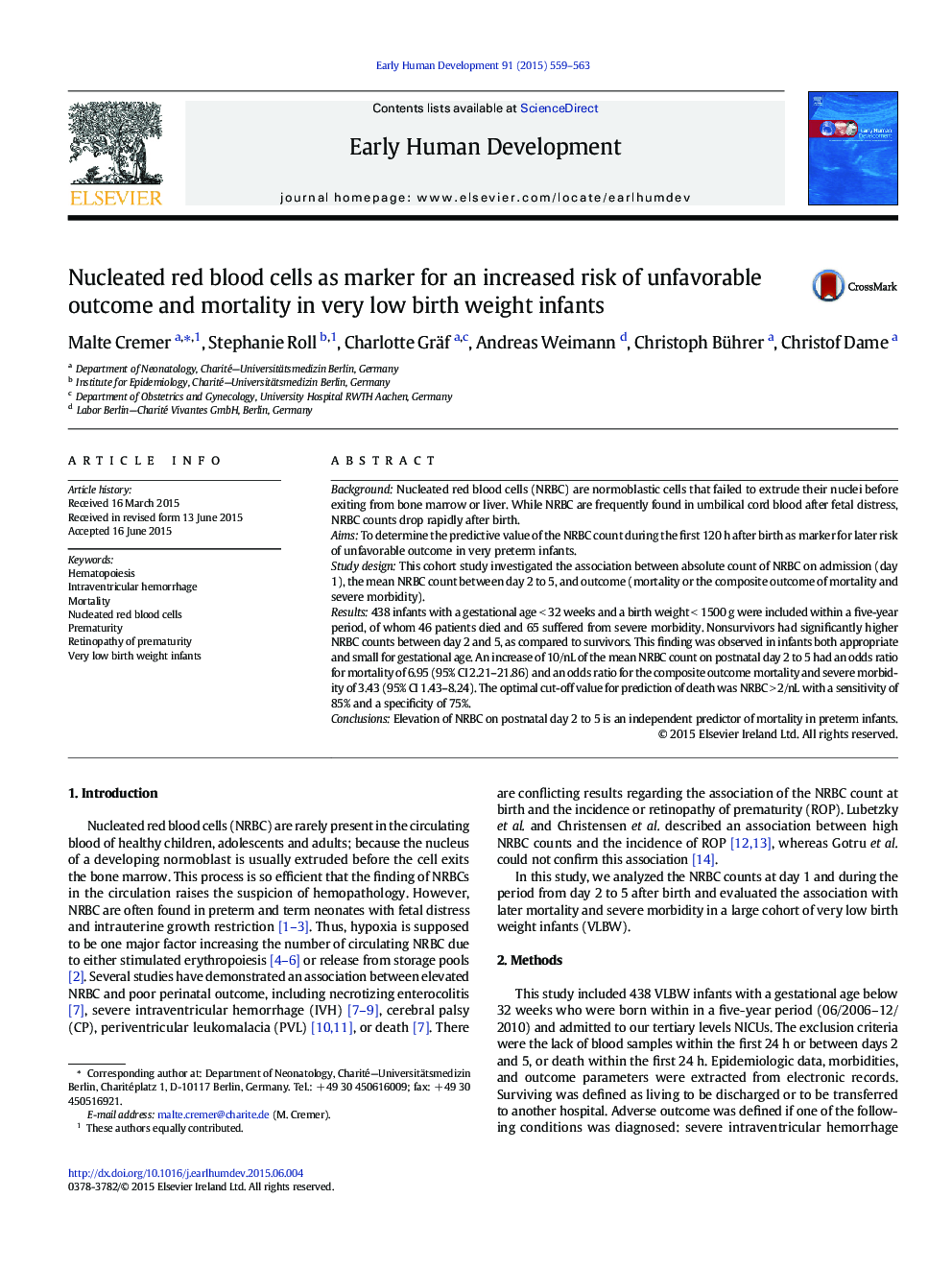| Article ID | Journal | Published Year | Pages | File Type |
|---|---|---|---|---|
| 3917731 | Early Human Development | 2015 | 5 Pages |
•We analyzed 438 very low birth weight infants and evaluated nucleated red blood cell (NRBC) from blood samples obtained between postnatal day 2-5 and identified an association with mortality.•We observed that an increase of NRBCs during day 2 and 5 of 10/nL had an odds ratio for mortality of 6.95 (95% CI 2.21-21.86)•An elevation in NRBC during the day 2- 5 antecedes neonatal death
BackgroundNucleated red blood cells (NRBC) are normoblastic cells that failed to extrude their nuclei before exiting from bone marrow or liver. While NRBC are frequently found in umbilical cord blood after fetal distress, NRBC counts drop rapidly after birth.AimsTo determine the predictive value of the NRBC count during the first 120 h after birth as marker for later risk of unfavorable outcome in very preterm infants.Study designThis cohort study investigated the association between absolute count of NRBC on admission (day 1), the mean NRBC count between day 2 to 5, and outcome (mortality or the composite outcome of mortality and severe morbidity).Results438 infants with a gestational age < 32 weeks and a birth weight < 1500 g were included within a five-year period, of whom 46 patients died and 65 suffered from severe morbidity. Nonsurvivors had significantly higher NRBC counts between day 2 and 5, as compared to survivors. This finding was observed in infants both appropriate and small for gestational age. An increase of 10/nL of the mean NRBC count on postnatal day 2 to 5 had an odds ratio for mortality of 6.95 (95% CI 2.21–21.86) and an odds ratio for the composite outcome mortality and severe morbidity of 3.43 (95% CI 1.43–8.24). The optimal cut-off value for prediction of death was NRBC > 2/nL with a sensitivity of 85% and a specificity of 75%.ConclusionsElevation of NRBC on postnatal day 2 to 5 is an independent predictor of mortality in preterm infants.
